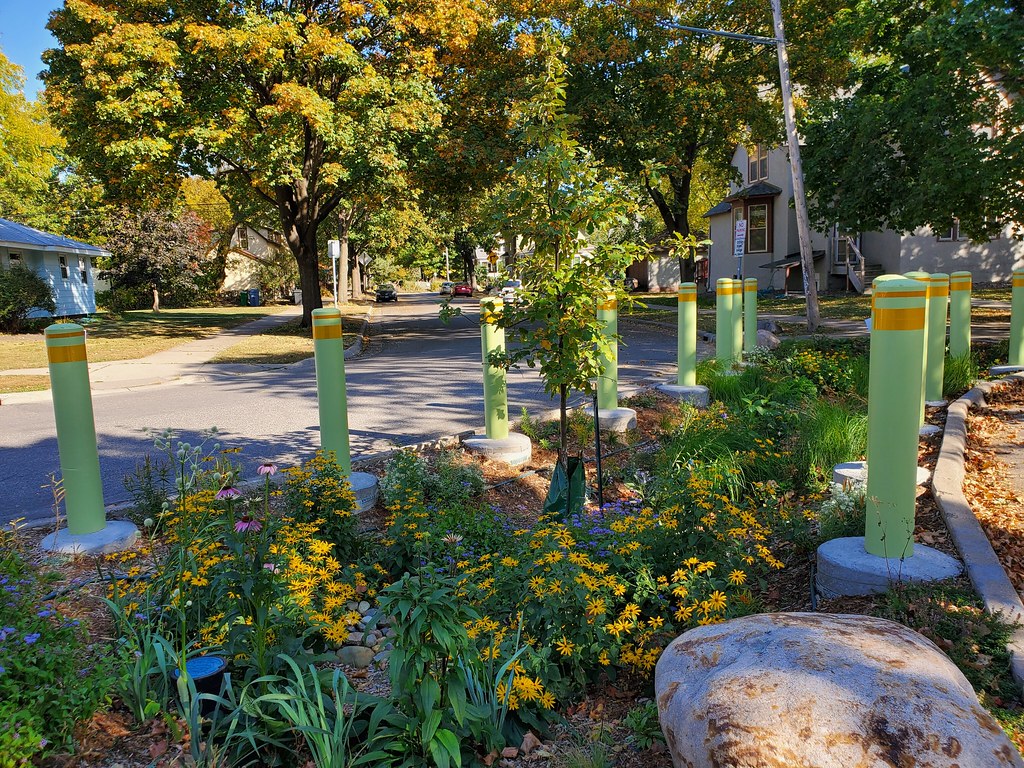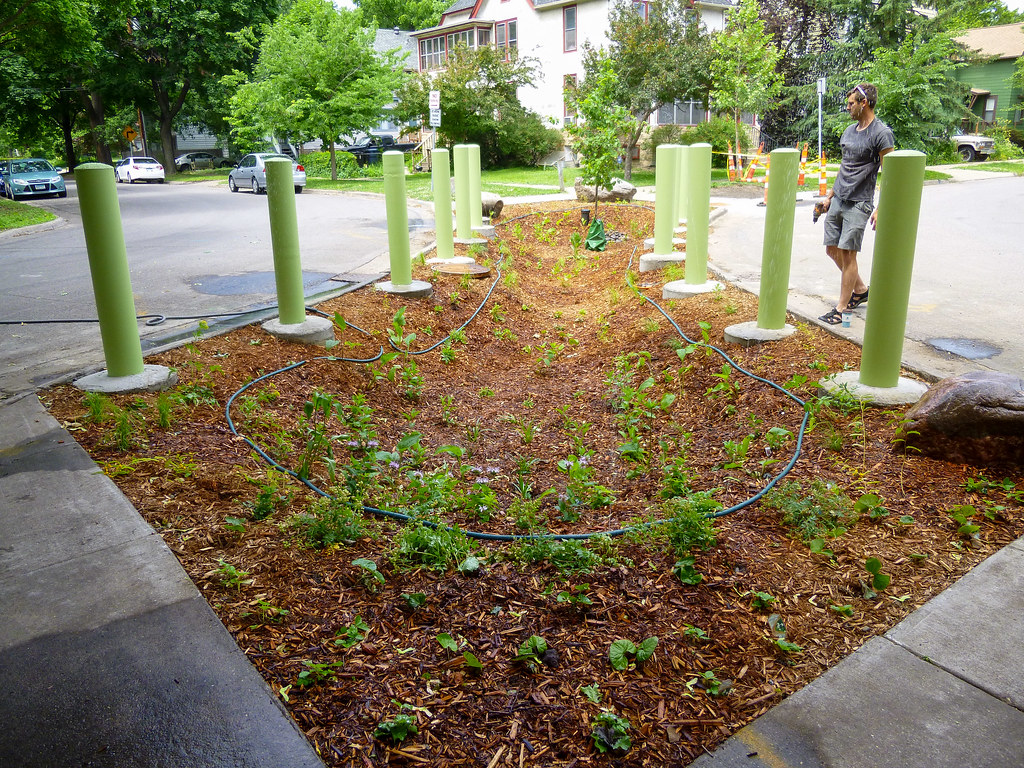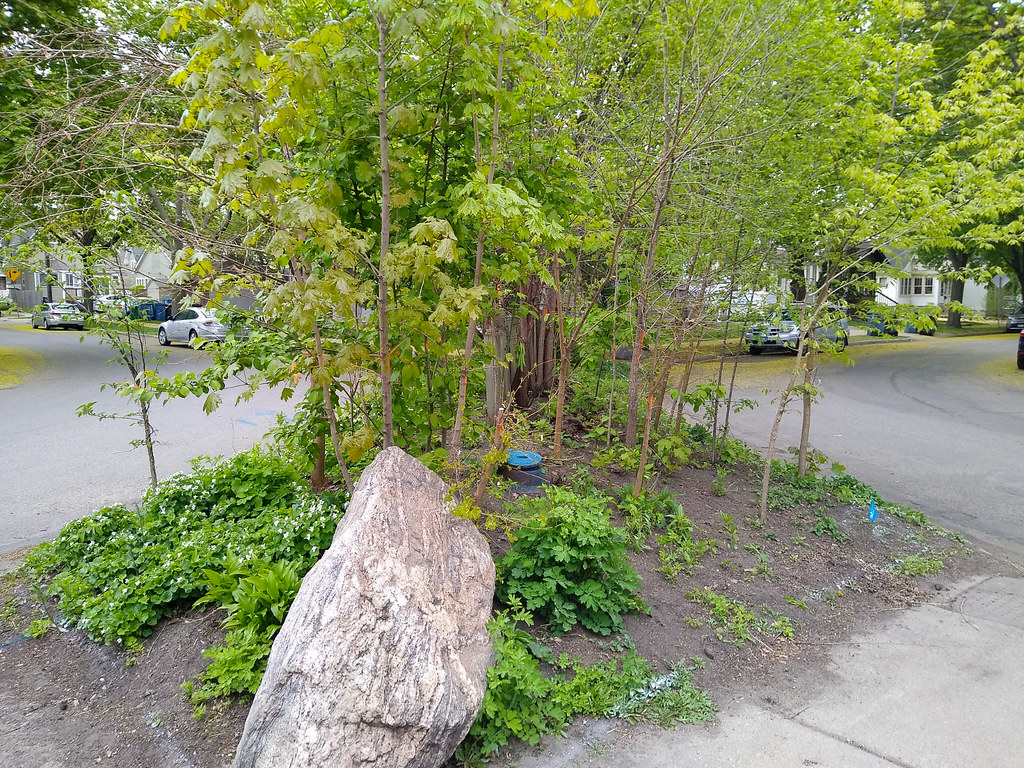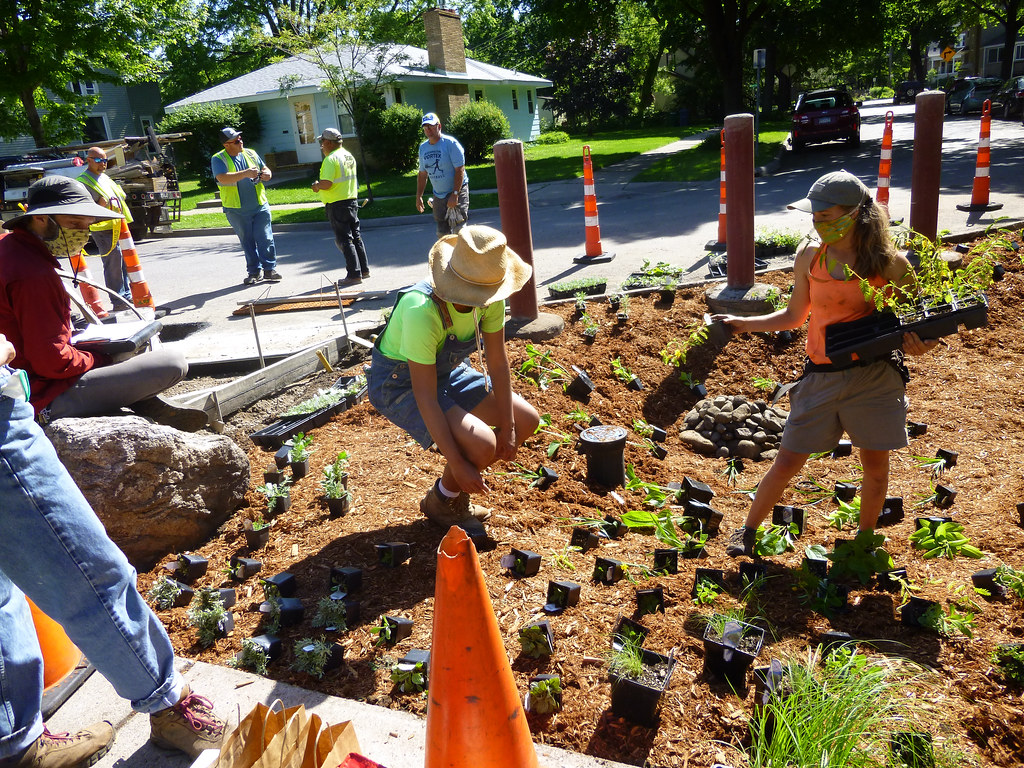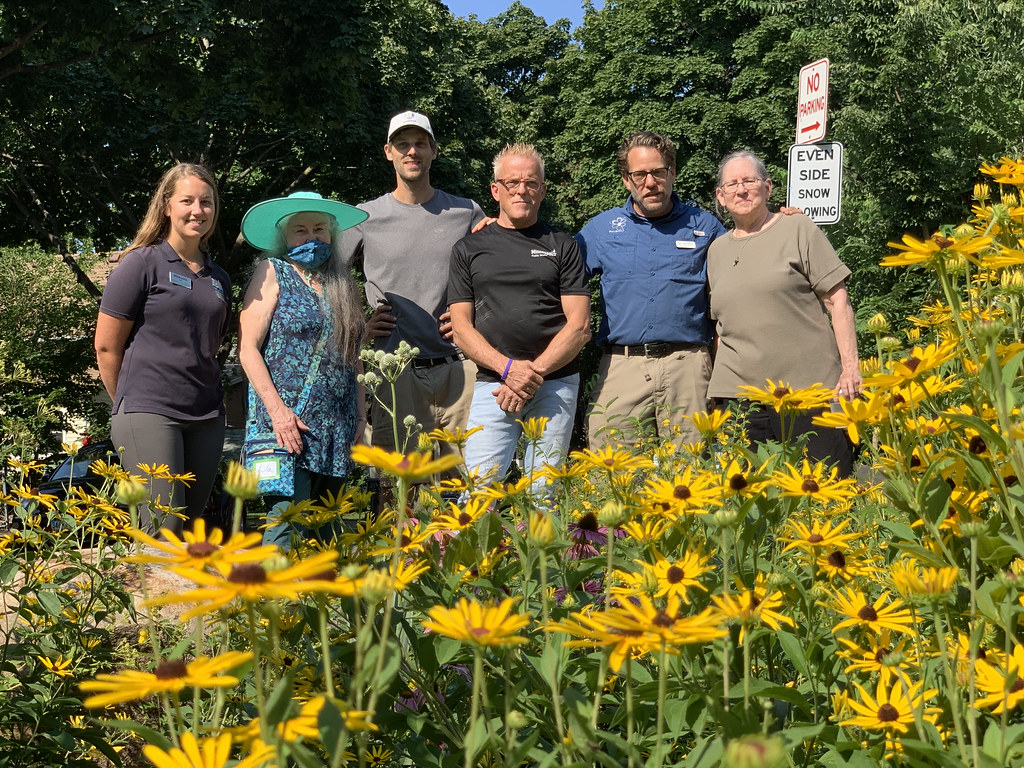SECIA Traffic Diverter Rain Garden
Minneapolis neighbors turned an overgrown traffic diverter into a rain garden that captures and treats street runoff.
Project Details
City: Minneapolis
Type: Community Grant (formerly Mini Grant), Action Grant
Status: Complete
Timeline: 2018-2021
MWMO Funding: $3,000 Mini Grant; $20,000 Action Grant
Partners: City of Minneapolis Public Works; Metro Blooms; Minneapolis Park and Recreation Board; Southeast Como Improvement Association
Nancy Stowe
Projects and Outreach Director
612-746-4978
Email Nancy Stowe
View Bio
Neighbors in the Southeast Como Neighborhood of Minneapolis converted an overgrown traffic diverter into a rain garden, with help from a pair of MWMO Stewardship Fund grants. Led by the Southeast Como Improvement Association (SECIA), the pilot project brought together a variety of local partners in a collaborative effort to fight pollution, create habitat, and beautify the neighborhood.
In 2016, the SECIA Livability Committee identified a project to cleanup five traffic diverters installed throughout the neighborhood. The traffic diverters were installed in the 1970s to cut down on traffic speeding through this residential neighborhood near the University of Minnesota. Overtime, the vegetative diverters started to degrade, with weed species taking over and trees and shrubs becoming overgrown. The committee connected with five University of Minnesota students in the Department of Forest Resources who took on the diverter cleanup project as their urban forestry capstone project. The primary recommendation from the student project was to transform the diverters into rain gardens.
The diverter on 15th Avenue SE and Talmage Avenue SE was selected as the pilot project, and SECIA sought out technical help to start the transformation. In 2018, an MWMO Mini Grant funded a project for Metro Blooms to redesign the traffic diverter from a mounded streetscape feature into a rain garden with native plants that would intercept water from the street. The design phase included site analysis such as siting of utilities and storm drain locations, examining soil conditions, design of the rain garden, and engagement of surrounding neighbors.
In 2020, the MWMO awarded an Action Grant to support the actual construction. Metro Blooms oversaw the implementation of the developed rain garden plan and, with help and expertise from the City of Minneapolis, the catch basin infrastructure was modified to accommodate the rain garden. A new basin and pipes allow water to drain into the diverter from the street, instead of being piped directly to the Mississippi River. The Minneapolis Park and Recreation Board also helped in the removal of existing weed trees.
This project will divert approximately 90 percent of the stormwater that used to flow into the storm drain to the rain garden and allow it to infiltrate down into the soil and be filtered by soils and the plants. This will divert more than 500,000 gallons of polluted stormwater each year away from the Mississippi River. The rain garden is filled with native flowering plants that highlight Minnesota’s natural biodiversity and will nourish pollinating insects and other wildlife.
The traffic diverter now serves multiple purposes — intercepting polluted stormwater from the street, calming traffic, and providing habitat. SECIA hopes that this pilot project will be an example for other similar sites across the city such as traffic circles and medians and a model for other municipalities.
